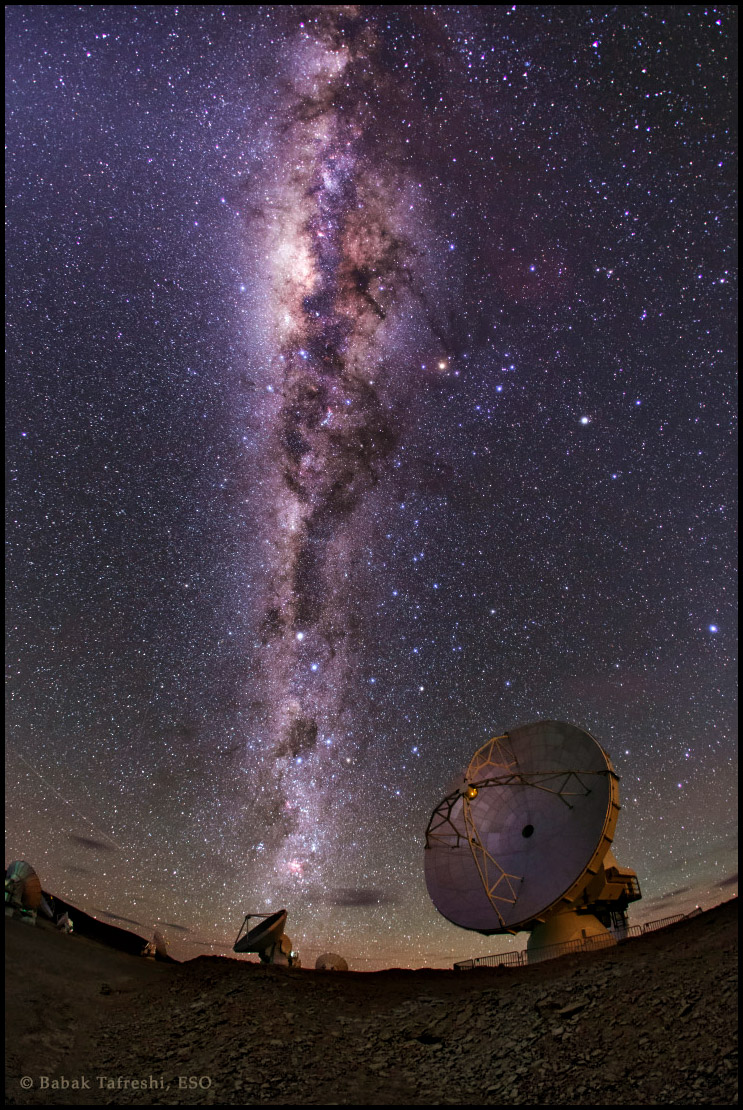The View from on High
Description
As seen on the National Geographic News the Milky Way galaxy lights up the night above two ALMA radio telescopes in Chile’s Atacama Desert. The altitude—5,000 meters (16,400 feet) above sea level—allows for exceptional visibility. The Southern Cross constellation (Crux) is visible to the left of the radio telescope in the foreground; Saturn is the brightest orb of light halfway down the image to the right.
Located at the Chajnantor plateau in the Chilean Andes, the Atacama Large Millimeter/submillimeter Array (ALMA) is considered as one of the most complex astronomical projects of our time. The 66 antennas of the array can operate together as a single giant telescope. ALMA is a partnership of Europe, North America and East Asia in cooperation with Chile. The site rarefied atmosphere, at about 50 percent sea level pressure, is also extremely dry. That makes it ideal for ALMA which is designed to explore the universe at wavelengths over 1,000 times longer than visible light. TWAN visit to ALMA was arranged by the European Southern Observatory (ESO), one of the main partner organizations of ALMA.

comments (4)
WOW, WISH THAT WAS ME TAKEING THAT PHOTO.
August 3, 2014 at 12:50 amLOVE YOUR WORK
August 3, 2014 at 12:53 amexcellent study of the Milky Way. great!
August 21, 2014 at 11:45 amPerfect, well done 🙂
December 29, 2014 at 3:02 am